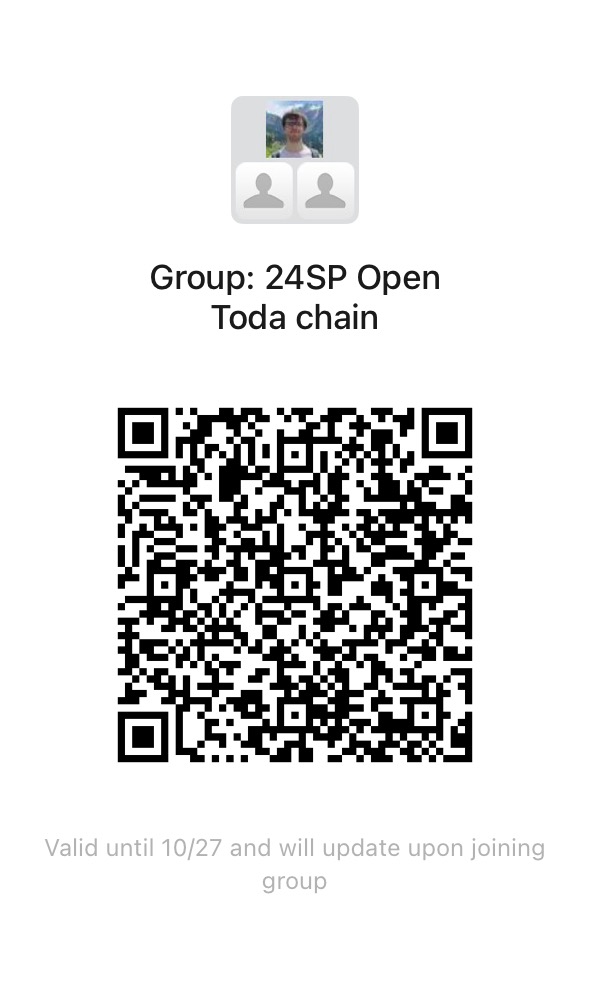Open quantum Toda chain
Quantum integrable models are ubiquitous both in Mathematics and in Theoretical Physics. The aim of this course is to introduce and illustrate on the typical example of the quantum Toda chain the framework of the theory of quantum integrable systems: Yang-Baxter equations, commuting transfer matrices, Q-operators, iterative construction of eigenfunctions. Most of these techniques are based on the use of integral R-operators -- the general solutions of the Yang-Baxter equation. The useful technique for the work with these operators is the technique of Feynman diagrams.
Keywords: quantum integrable models, Yang-Baxter equation, Q-operators, integral transformations, Feynman diagrams.
Keywords: quantum integrable models, Yang-Baxter equation, Q-operators, integral transformations, Feynman diagrams.

Lecturer
Sergey Derkachov
Date
21st October ~ 4th December, 2024
Location
| Weekday | Time | Venue | Online | ID | Password |
|---|---|---|---|---|---|
| Monday,Wednesday | 09:50 - 11:25 | A3-2-303 | ZOOM 06 | 537 192 5549 | BIMSA |
Prerequisite
Graduate level knowledge of quantum mechanics, Fourier transform, complex analysis on the plane and theory of special functions: Euler beta- and gamma-functions and hypergeometry
Syllabus
1) Quantum Toda open chain.
Hamiltonian and family of commuting operators.
Lax operator, monodromy matrix and Yang-Baxter commutation relations.
Main Problem. Spectrum is continuous and simple.
Construction of common eigenfunctions of the family of commuting operators.
Proof of orthogonality and completeness.
2) Q-operator. Definition, kernel identity.
Motivation from classical Baecklund transformation.
Ladder-operators. Iterative construction of eigenfunction in x-space -- Gauss-Givental representation for eigenfunctions.
Feynman diagrams. Proof of the main relations.
3) Calculation of scalar product and hidden role of Q-operator.
Iterative construction of eigenfunction in spectral-space -- Mellin-Barnes representation for eigenfunctions.
Gustafson integrals and completeness.
4) Reflection equations. BC-Toda chain.
Construction of eigenfunctions.
The whole presentation will be based on application of the methods developed in a series of papers with N.Belousov, S.Kharchev and S.Khoroshkin to the case of the open Toda chain.
Hamiltonian and family of commuting operators.
Lax operator, monodromy matrix and Yang-Baxter commutation relations.
Main Problem. Spectrum is continuous and simple.
Construction of common eigenfunctions of the family of commuting operators.
Proof of orthogonality and completeness.
2) Q-operator. Definition, kernel identity.
Motivation from classical Baecklund transformation.
Ladder-operators. Iterative construction of eigenfunction in x-space -- Gauss-Givental representation for eigenfunctions.
Feynman diagrams. Proof of the main relations.
3) Calculation of scalar product and hidden role of Q-operator.
Iterative construction of eigenfunction in spectral-space -- Mellin-Barnes representation for eigenfunctions.
Gustafson integrals and completeness.
4) Reflection equations. BC-Toda chain.
Construction of eigenfunctions.
The whole presentation will be based on application of the methods developed in a series of papers with N.Belousov, S.Kharchev and S.Khoroshkin to the case of the open Toda chain.
Reference
1) The Quantum Toda Chain, E.K. Sklyanin, Lect.Notes Phys. 226 (1985) 196-233
2) How algebraic Bethe ansatz works for integrable model, L.D. Faddeev, e-Print: hep-th/9605187 [hep-th]
3) Integral representation for the eigenfunctions of quantum periodic Toda chain, S. Kharchev, D. Lebedev, Lett.Math.Phys. 50 (1999) 53-77, e-Print: hep-th/9910265 [hep-th]
4) Integral representations for the eigenfunctions of quantum open and periodic Toda chains from QISM formalism, S. Kharchev, D. Lebedev, J.Phys.A 34 (2001) 2247-2258, e-Print: hep-th/0007040 [hep-th]
5) Baxter operators in Ruijsenaars hyperbolic system
I. Commutativity of Q-operators, e-Print: 2303.06383 [math-ph]
II. Bispectral wave functions, e-Print: 2303.06382 [math-ph]
III. Orthogonality and completeness of wave functions, e-Print: 2307.16817 [math-ph]
N. Belousov, S. Derkachov, S. Kharchev, S. Khoroshkin
2) How algebraic Bethe ansatz works for integrable model, L.D. Faddeev, e-Print: hep-th/9605187 [hep-th]
3) Integral representation for the eigenfunctions of quantum periodic Toda chain, S. Kharchev, D. Lebedev, Lett.Math.Phys. 50 (1999) 53-77, e-Print: hep-th/9910265 [hep-th]
4) Integral representations for the eigenfunctions of quantum open and periodic Toda chains from QISM formalism, S. Kharchev, D. Lebedev, J.Phys.A 34 (2001) 2247-2258, e-Print: hep-th/0007040 [hep-th]
5) Baxter operators in Ruijsenaars hyperbolic system
I. Commutativity of Q-operators, e-Print: 2303.06383 [math-ph]
II. Bispectral wave functions, e-Print: 2303.06382 [math-ph]
III. Orthogonality and completeness of wave functions, e-Print: 2307.16817 [math-ph]
N. Belousov, S. Derkachov, S. Kharchev, S. Khoroshkin
Video Public
Yes
Notes Public
Yes
Language
English
Lecturer Intro
Sergey Derkachov is leading researcher of the Laboratory of Mathematical Problems of Physics in St. Petersburg Department of Steklov Mathematical Institute of Russian Academy of Sciences. The research activity in the last period of time is concentrated on application of the methods of integrable systems to the problems of the quatum field theory, for example, the multiloop calculations.





